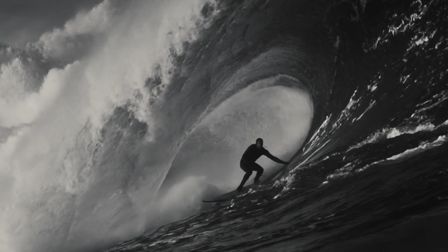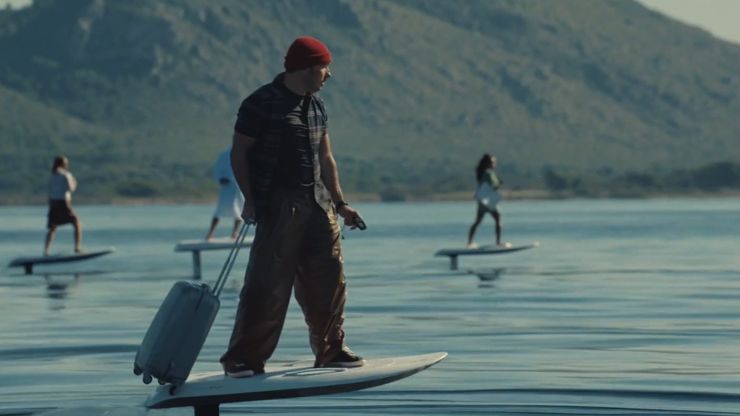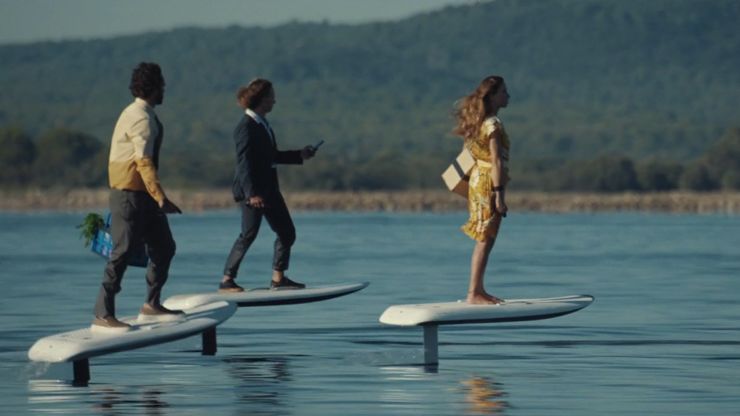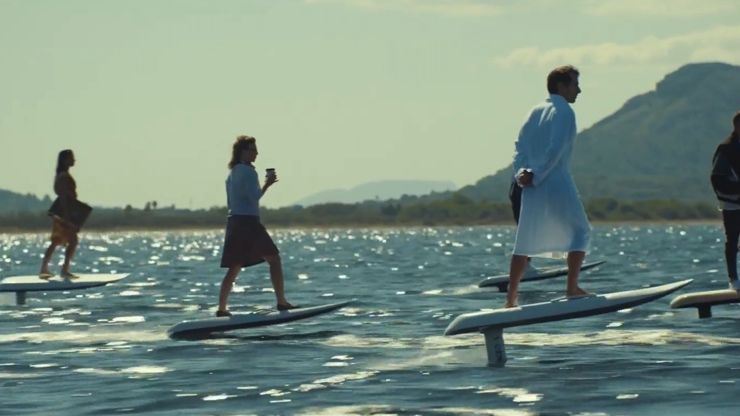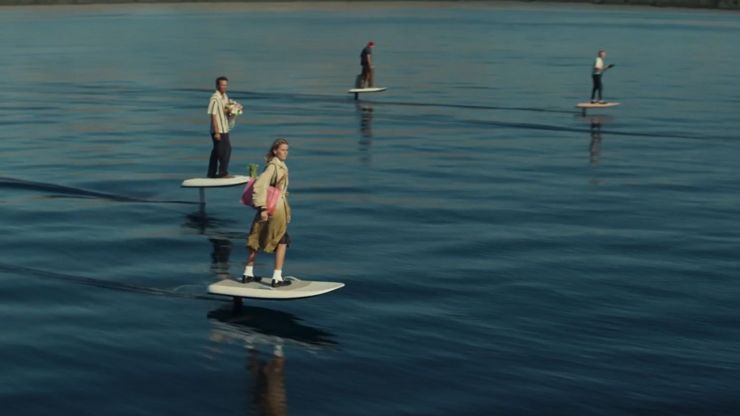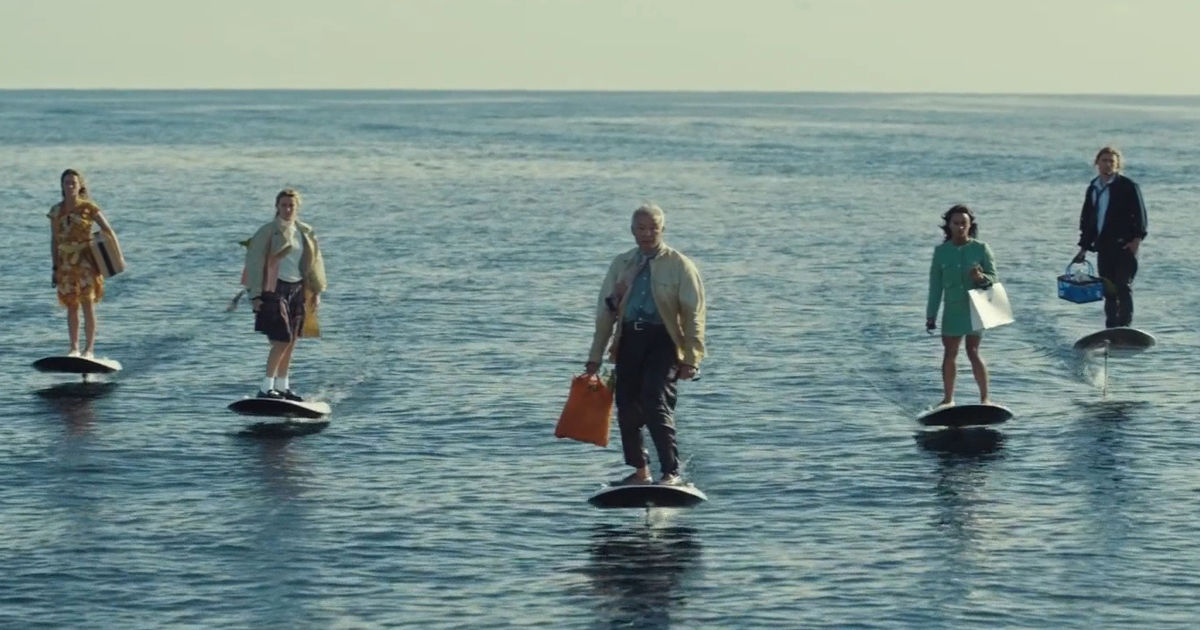How Avios' new campaign glided onto screens
Uncommon London's new campaign for IAG Loyalty's Avios points scheme is a beautiful, calm and tranquil film featuring a sea of e-foilers gliding across a placid body of water. Here, director Sam Walker explains that creating the film was not all plain sailing.
This new campaign for Avios is both a brilliant and serenely simplistic idea, as well as a hugely complex and involved shoot.
Called Everyday and created by Uncommon Creative Studio, the 90-second film addresses the misconception that you can only collect Avios points by booking flights, with the film spotlighting that members are able to make their dream holiday a reality far sooner by collecting Avios through a broad variety of everyday transactions.
Credits
powered by
- Agency Uncommon/London
- Production Company Pulse Films/London
- Director Sam Walker
-
-
Unlock full credits and more with a Source + shots membership.
Credits
powered by
- Agency Uncommon/London
- Production Company Pulse Films/London
- Director Sam Walker
- Edit Final Cut/London
- Post Production Rascal Post Production
- Sound King Lear Music & Sound
- Music Supervision Native Music Supervision & Production
- Service Company Palma Pictures UK
- Executive Producer Chris Harrison
- Producer John Bannister
- DP Daniel Voldheim
- Editor Joe Guest
- Assistant Editor Matt Gabzdyl
- VFX Supervisor/Creative Director Gareth Brannan
- VFX Supervisor/Executive Creative Producer/2D Lead Andrew (Barnsley) Wood
- 2D Lead John Thornton
- Head of Production VFX James Beck
- Executive Producer Colin Oaten
- 3D Artist Adam Ahlgren
- Colorist James Bamford
- Colour Producer Jai Mhach Durban
- Sound Designer Jack Sedgwick
- Music Supervisor Dan Neale
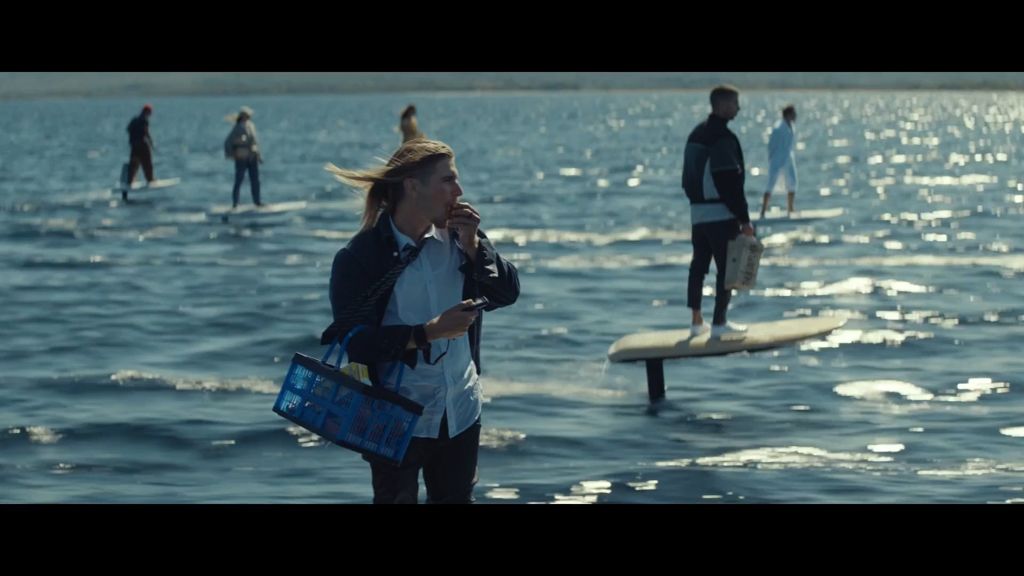
Credits
powered by
- Agency Uncommon/London
- Production Company Pulse Films/London
- Director Sam Walker
- Edit Final Cut/London
- Post Production Rascal Post Production
- Sound King Lear Music & Sound
- Music Supervision Native Music Supervision & Production
- Service Company Palma Pictures UK
- Executive Producer Chris Harrison
- Producer John Bannister
- DP Daniel Voldheim
- Editor Joe Guest
- Assistant Editor Matt Gabzdyl
- VFX Supervisor/Creative Director Gareth Brannan
- VFX Supervisor/Executive Creative Producer/2D Lead Andrew (Barnsley) Wood
- 2D Lead John Thornton
- Head of Production VFX James Beck
- Executive Producer Colin Oaten
- 3D Artist Adam Ahlgren
- Colorist James Bamford
- Colour Producer Jai Mhach Durban
- Sound Designer Jack Sedgwick
- Music Supervisor Dan Neale
Above: Uncommon's new campaign for Avios, Everyday.
The new film features people undertaking everyday tasks such as grocery shopping, drinking a coffee and ordering an Uber, but all while riding e-foil surfboards across a serene bay — metaphorically spending their way to the holiday of their dreams.
Directed by Sam Walker through Pulse Films and set to the sound of Seasons (Waiting on You) by Future Islands, Everyday was an in-camera labour of love which required the expertise of the e-foilers from around the world and stunt choreography by No Time To Die stunt coordinator Boris Martinez.
Below, Walker tells us about the challenge of making a film featuring a stunt no one had every tried before, why he decided to forego VFX, and why the e-foil riders travelled over 40 miles on their boards for the shoot.
What was the brief from the client for this campaign and, as an agency, how did you approach it?
The aim was to relaunch Avios into the public’s consciousness and remind people Avios is a way you can pay for your holiday with your different everyday actions.
It's quite an unusual concept; was there any discussion around the slightly surreal nature of the idea?
It’s a high concept idea, really - a vision of what feels like a nation riding e-foils towards their perfect holiday destination, all dressed in everyday clothes and holding ways they can earn Avios.
It’s a vision of what feels like a nation riding e-foils towards their perfect holiday destination.
Given it’s such a simple idea, it was essential the image we were creating was as bold and committed as possible.
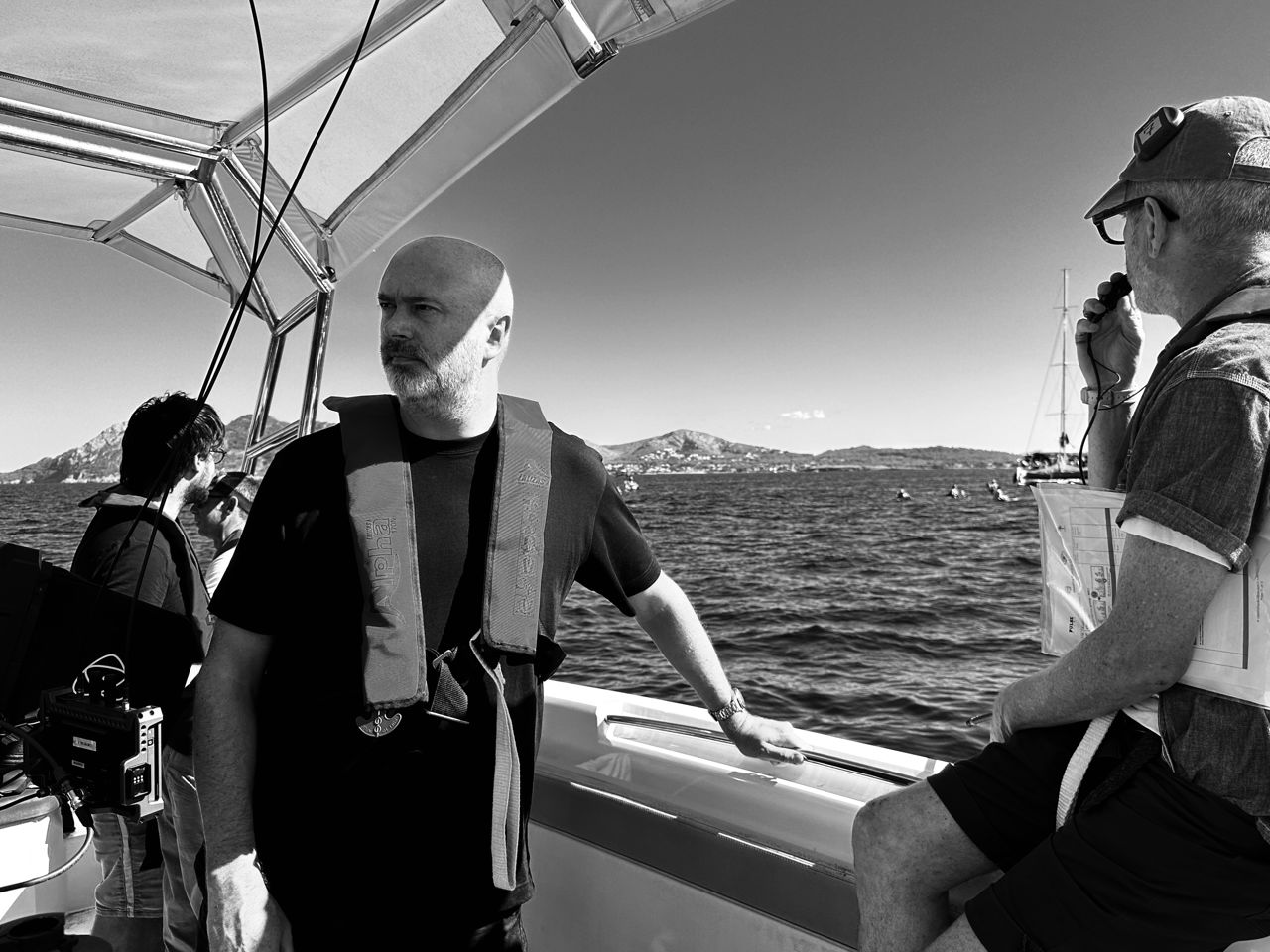
Above: Sam Walker, ECD at Uncommon and the director of Everyday, shot through Pulse Films.
Was part of the idea simply that the concept, and the eventual execution, has a 'WTF?' vibe, so engages viewers all the way through to the endline?
E-foils are such alien, futuristic-looking things anyway, but then combined with normal people, wearing normal clothes, at a giant scale, we hoped it would be something that would grab attention.
There’s something magical that happens when you do things for real, perfect imperfections that elevate the film.
There are some ideas that are based on how visually impactful they are as much as their meaning. If e-foils weren’t so insane and otherworldly the idea wouldn’t have worked as well. Half the people I’ve shown the film to still can’t really believe what they’re looking at. E-foils don’t really look real, even in real life.
With the concept set, was there then discussion around whether this could be achieved in-camera, or whether VFX would be needed?
For me, this idea was always going to be in-camera. If we couldn’t have done it for real, I would have done something else. There’s something magical that happens when you do things for real, perfect imperfections that elevate the film. The viewer can tell when something’s in-camera, even if they don’t know why. They instinctively understand what they’re looking at was done in the real world, and there’s value in that.

Above: The spot features people doing everyday tasks... while riding an e-foil.
How much more of a challenge was it to do in-camera?
Shooting the stunt in-camera was extremely challenging. E-foiling as a technology has only been around for a couple of years, so there simply aren’t that many people globally who can e-foil to the level we needed.
The scale of the stunt we were attempting had never been done before, and the deeper we got into the process the more challenging we realised it was. As a director, I like to really understand as much as possible about the mechanics and safety considerations of how stunts work in reality. Once I know what the real limitations are, we can figure out how far we can push something, and hopefully create something memorable and new.
The scale of the stunt we were attempting had never been done before.
The most challenging part was the fact that, as the riders got close to each other and rode over another rider’s jet stream, they would fall off and cause hazards for people behind them, almost like a motorway pileup. Working with stunt coordinator, Boris Martinez (No Time To Die, Bourne Ultimatum, Skyfall) and e-foil expert, Adrian Valios, we designed a variety of formations that gave us the scale we were searching for but at the same time were safe for our performers.
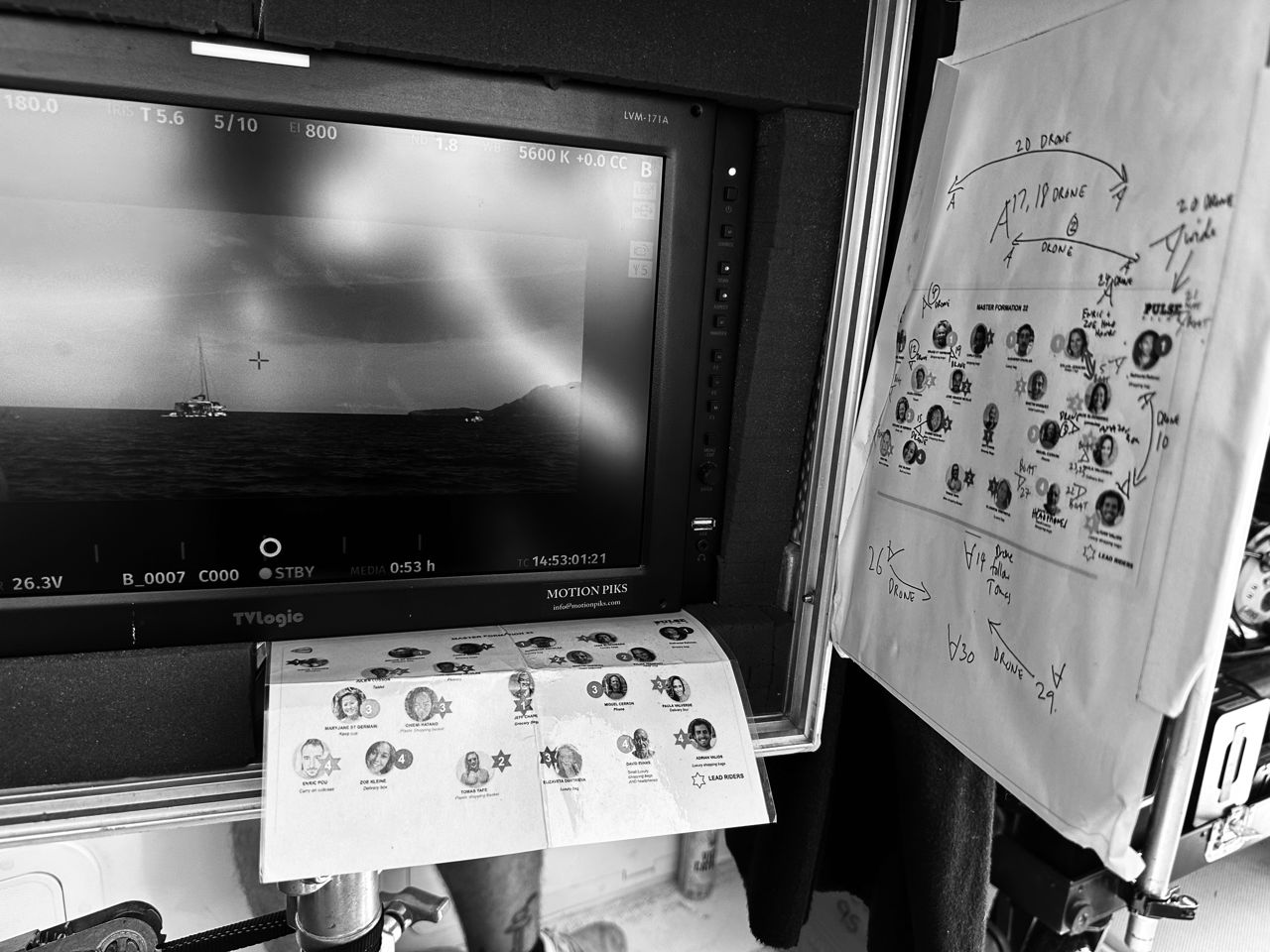
Above: The shooting of the e-foilers took meticulous planning.
Where was the film shot and why did you choose that location?
It was quite unlike any location scout I’ve done before, and was as much about the practicality of the stunt as it was about what the location looked like.
It was shot in the north of Majorca, in a large, open bay. We scouted pretty much the entire island and the location we chose in the end had a beautiful beach and hotel but, almost more importantly, had the biggest, most sheltered expanse of water on the island. For e-foils to be able to operate properly, and certainly for them to be able to operate at speed in large groups, the water needs to be as flat as possible, while still being deep enough to accommodate the underwater wings. We also had to consider waves, the wind, and other water traffic as we couldn’t close the beaches.
We were incredibly lucky with the weather. We could have shot there for a year and we wouldn’t have had better conditions.
We were incredibly lucky with the weather, and the shoot went far smoother than I had anticipated. The water was freakishly flat with no wind at all. It almost didn’t look real even as we were shooting. The image of a huge group of normal looking people gliding like heroes on futuristic-looking hoverboards across glass-like water was crazy. We could have shot there for a year and we wouldn’t have had better conditions.

Above: Once out on the water, it was impossible to communicate with all the e-foilers at once.
In terms of casting, was the first consideration whether or not the actors could ride the e-foils?
First and foremost, it was essential that our cast were expert e-foilers. What we were doing had never been done before, and not even our stunt coordinators knew how it was going to go for sure. And, beyond that, on a purely fitness level, it was going to be a huge physical feat for each cast member. Their ability to e-foil to a super-high standard was the first requirement, but we then needed to cast people who looked like normal people, as opposed to the stereotypical, fit surfer types.
What we were doing had never been done before, and not even our stunt coordinators knew how it was going to go for sure.
My goal was this to feel like ‘everybody’; all ages, shapes, and ethnicities. For it to stand out and be visually impactful it had to be a true cross section of humanity. The key was that, no matter who these people were, like Bruce (66), the older coffee cup guy in the suit, or Jeff (67), our hero who opens the film, they needed to look badass doing it. I was so chuffed with each and every performer. They all nailed it and looked super-confident, like it was the most normal thing in the world. The camaraderie on set was really special and they all supported each other through what was a very physical two days.
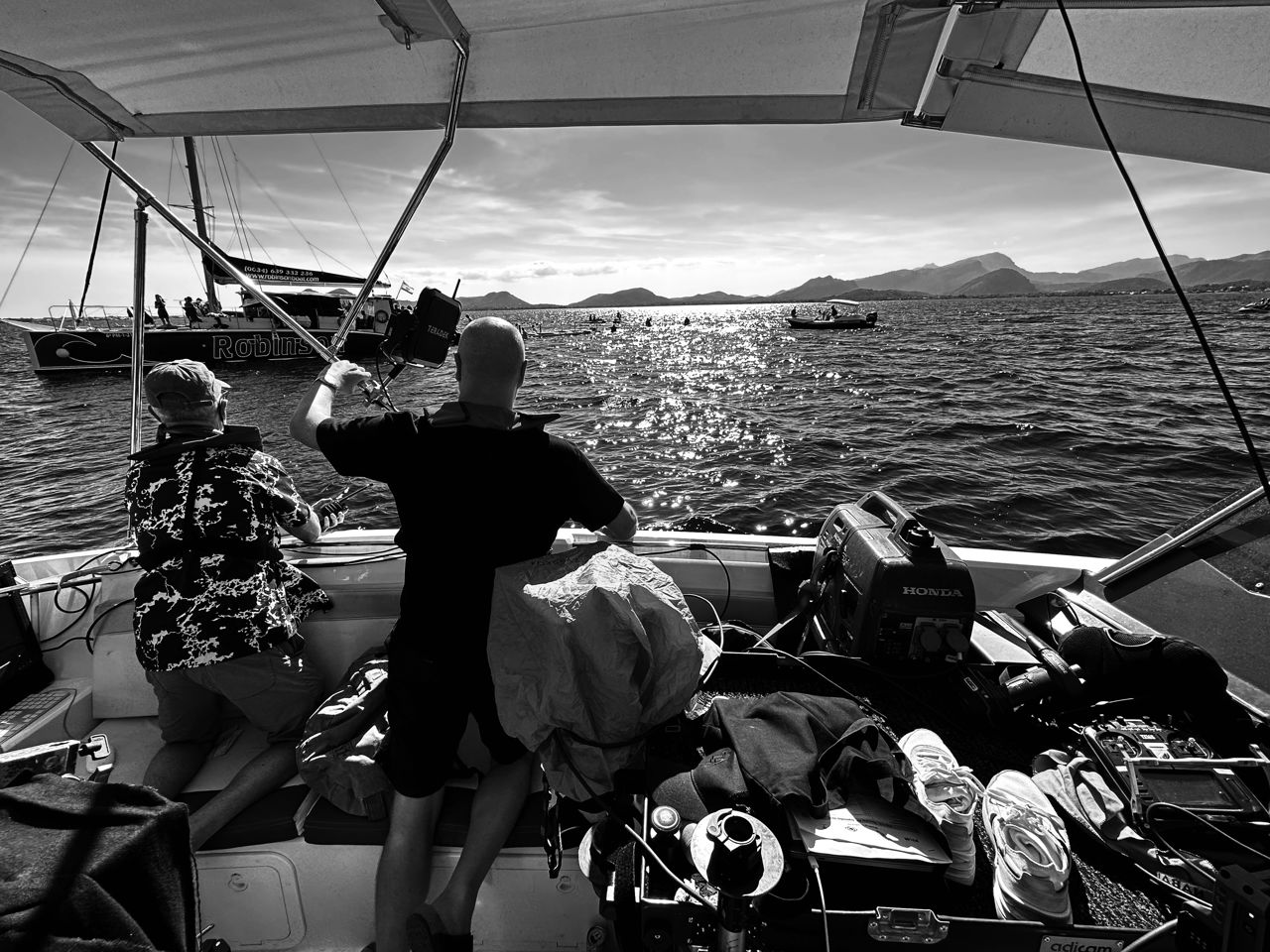
Above: To shoot the film there were two main cameras, a camera boat with a crane arm, and an A-camera which was a heavy lift Alta X drone.
How complex was the shoot? How many takes were there and, if people fell in, did you have to dry them off, or use another actor?
The shoot was very complex, with the safety of our riders at the forefront of my mind. Not only was the stunt itself inherently challenging, but there were also jellyfish close to the surface of the water that would knock off the riders if their underwater fins collided with them.
We filmed individual shots during ‘runs’ that lasted a mile and a half. It took half a mile to get the riders up to speed and into formation, then get the camera into position, then we’d shoot for over half a mile, then a slow-down section for another half a mile. If a rider fell off we’d have to wait for them to clear frame then keep shooting as it often took us half an hour to turn around so we didn’t have any time to waste. In the end, we worked out that the riders had travelled over 40 miles on their boards, far enough to ride cross the English Channel and back.
If a rider fell off we’d have to wait for them to clear frame then keep shooting as it often took us half an hour to turn around so we didn’t have any time to waste.
We rehearsed extensively on land before we shot and figured out formations, camera angles and lenses for different shots. Once you’re out on the water it’s impossible to communicate with that number of riders all at once. And everything happens twice as slowly when shooting on water anyway. It was essential to figure out everything before we started a ‘run’, and give direction in between takes so the cast know what they’re doing and could just concentrate on how they were riding.
The cast, who were all real people instead of actors, were absolute troopers. We didn’t have one complaint throughout the whole shoot which, given how physically challenging it was, was credit to them all.
Above: The e-foil riders were sourced from all across the world.
Can you tell us about the cameras/equipment/angles you used?
We had two main cameras, a camera boat with a crane arm, and then our A-camera was a heavy lift Alta X drone. We simply couldn’t have achieved the shots we needed through any other method. Our camera boat had to be powerful enough to keep up with e-foilers but, the bigger the boat, the bigger the wake, and the further away we would have to be to avoid knocking off our performers. The drone, despite having its own safety and practical challenges, could achieve far more dynamic shots than the more traditional camera boat.
The bigger the [camera] boat, the bigger the wake, and the further away we would have to be to avoid knocking off our performers.
It’s the first time I’ve approached a shoot where my DoP and I are focused more on the drone cam than our boat-mounted camera. Despite using a drone as our primary camera, we used old anamorphic lenses to give the film a cinematic feel. My DoP, Daniel Voldheim, did a brilliant job.
Above: The conditions for the shoot were perfect, said Walker; "We could have shot there for a year and we wouldn’t have had better conditions."
Can you tell us about the music; what is it and why was it chosen as the soundtrack to the spot?
The soundtrack is Seasons (Waiting on You) by Future Islands. I’ve loved this track since I saw an iconic live performance on Letterman years ago. The song had exactly what we needed in terms of its structure. I wanted a piece of music that was intriguing when it started to echo the slow reveal opening shot, then build up in the middle section, before bursting into the big, euphoric finish as we get towards our climax.
What was the most challenging part of the project?
The stunt we were doing had never been done before at the scale we were attempting so, although we thought it was possible, we didn’t know for sure. There were no best practices we could look up, everything we were doing we had to figure out for ourselves from scratch. Shooting in-camera is definitely doing it the hard way but there’s no substitute for reality and the value you get from that is priceless. I was fully expecting things to go wrong on the day but I was so chuffed how it turned out in the end.
There were no best practices we could look up, everything we were doing we had to figure out for ourselves from scratch.
It was a uniquely challenging project, but I had an amazing team around me that made it all possible. Thanks so much to the whole team at Uncommon, my brilliant producers John Bannister and Danielle Sandler, my DoP Daniel Voldheim, the entire production team and cast, Barnsley and his crew at Rascal, Joe Guest at Final Cut, and Jack Sedgwick at King Lear. And finally, a huge thank you to our amazing Avios clients for believing in such a singular idea and trusting in our ability to pull it off.
)









